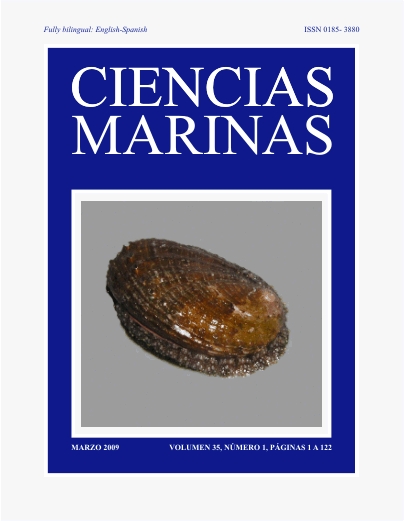Environmental factors influencing the variability of Lingulodinium polyedrum and Scrippsiella trochoidea (Dinophyceae) cyst production
Main Article Content
Abstract
This study analyzes the temporal variability of the abundance of Lingulodinium polyedrum and Scrippsiella trochoidea resting cysts in surface sediments, as well as the temporary cysts and vegetative cells of L. polyedrum in the upper water column of Todos Santos Bay (Baja California, Mexico). Samples were collected monthly from January 2002 to June 2005 at four sites. Multidimensional scaling analysis and analysis of similarities revealed that resting cysts are distributed heterogeneously according to the sedimentary environment. Surface water temperature, inorganic dissolved phosphate, and the abundance of temporary cysts were the main factors influencing the abundance of L. polyedrum resting cysts, while the variability of temporary cysts was explained by the abundance of planktonic cells. Scrippsiella trochoidea resting cysts showed no statistical relationship with the environmental factors considered. Local runoff during the rainy season and sewage from the city of Ensenada contribute to the eutrophication of the bay. This is an important factor for future blooms since inorganic dissolved nitrate + nitrite and daylight hours during the spring-summer season are not limiting factors for dinoflagellate growth. After the dinoflagellate blooms, there was massive cyst production of both species, and the new cysts settled on the surface sediments. Surface water temperatures between 17°C and 22.5°C during spring-summer appear to trigger excystment in these species.
Downloads
Article Details
This is an open access article distributed under a Creative Commons Attribution 4.0 License, which allows you to share and adapt the work, as long as you give appropriate credit to the original author(s) and the source, provide a link to the Creative Commons license, and indicate if changes were made. Figures, tables and other elements in the article are included in the article’s CC BY 4.0 license, unless otherwise indicated. The journal title is protected by copyrights and not subject to this license. Full license deed can be viewed here.

